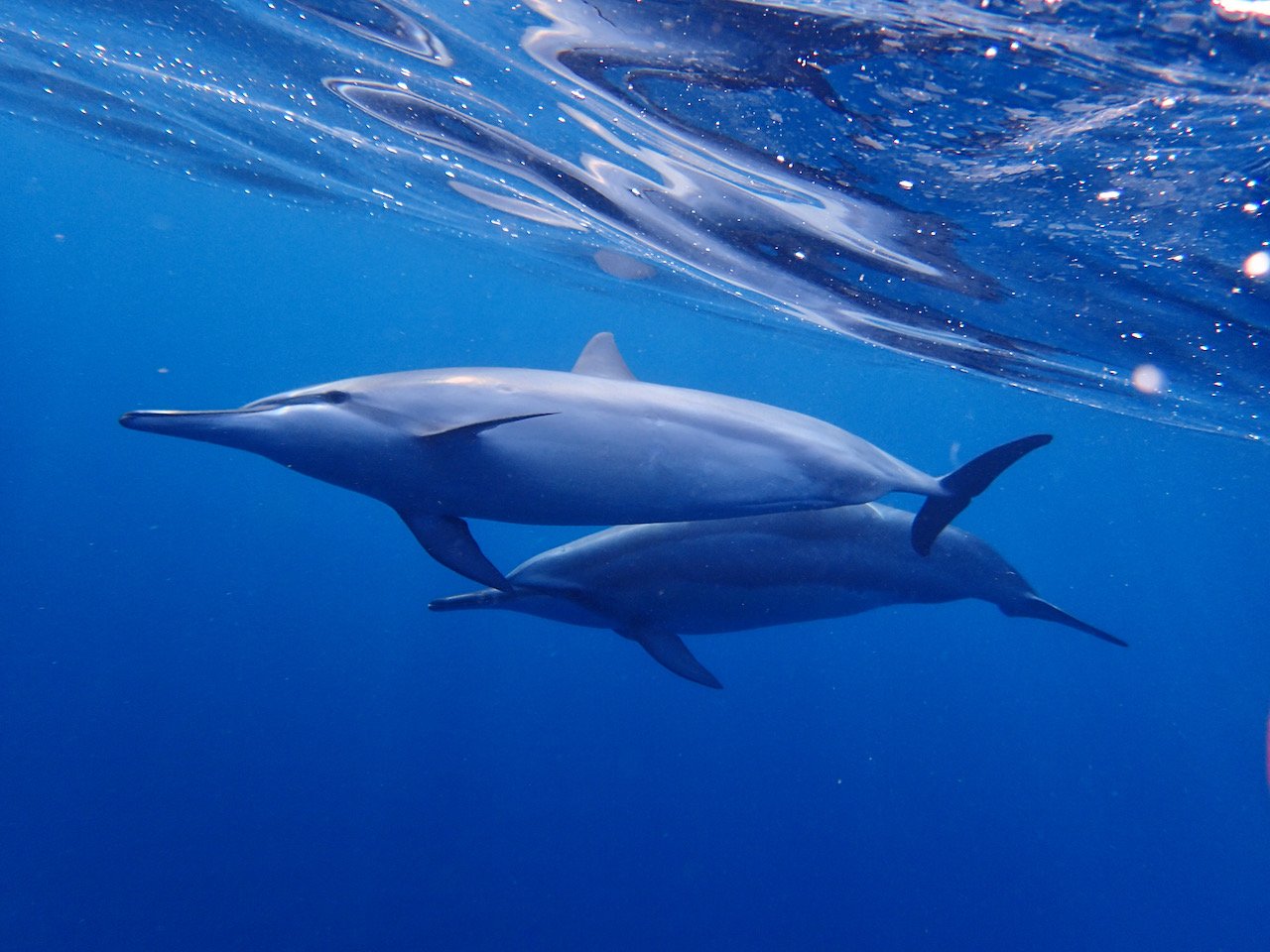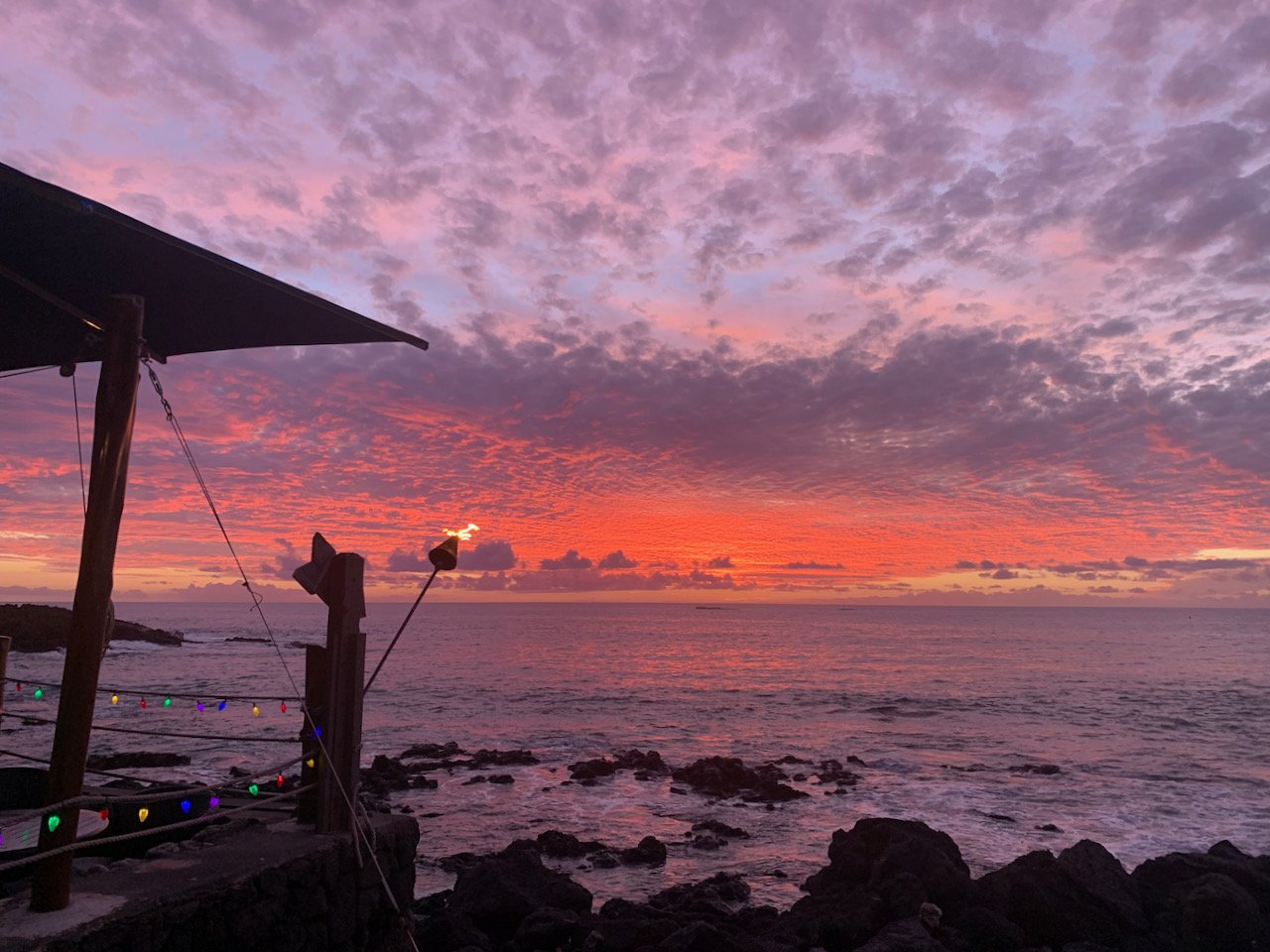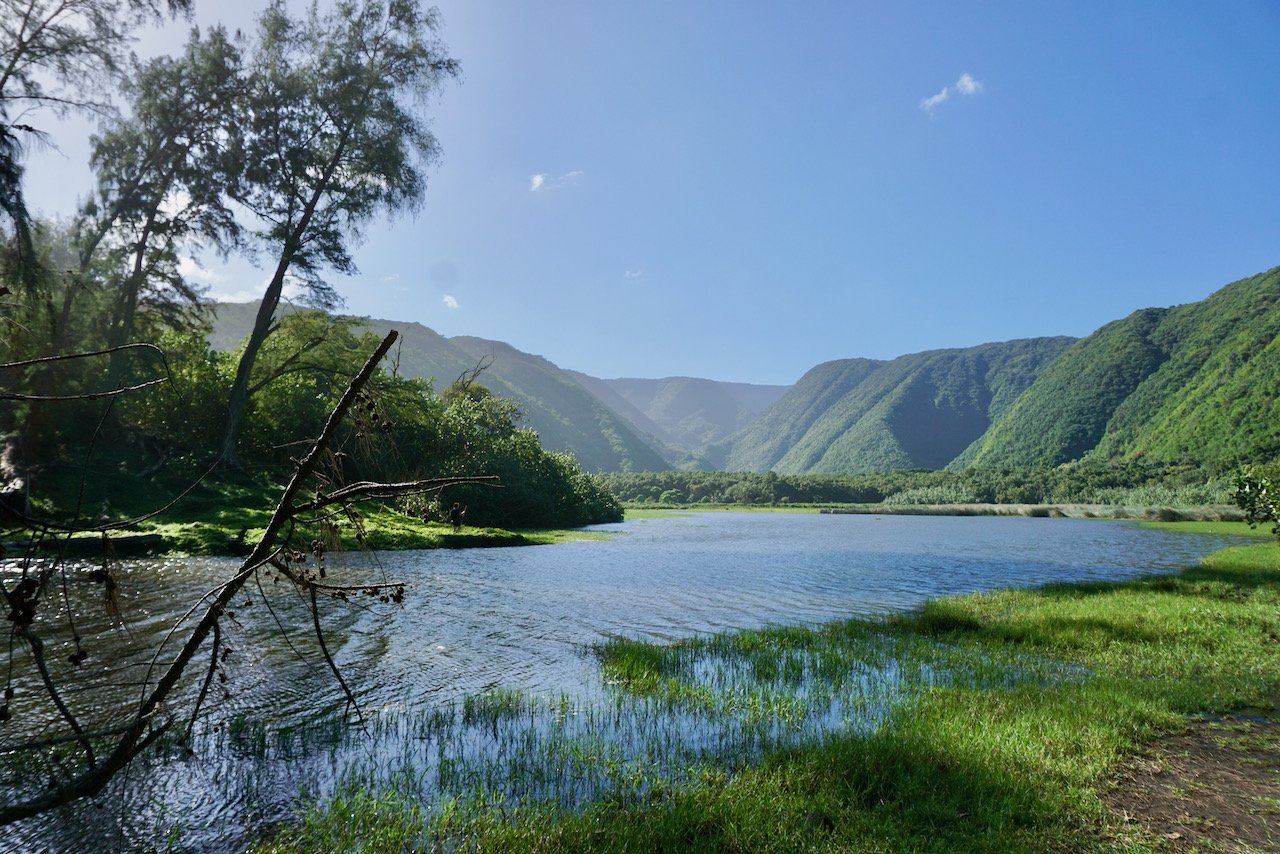Swim with the dolphins, if it’s still allowed © The Real Destinations 2022
Before Hawaii was unified, there was the island of Hawai’i, the Big Island. As the youngest Hawaiian island, it’s still growing, as the volcanic activity suggests. The size of this island means you can find everything that makes the other islands great here, to some extent.
Let’s start with the unique attractions you won’t find in the other islands. Volcanos, the constant, low grade ones, if you’re lucky on the timing. The Volcanos National Park combines lava fields with lush rainforest surroundings.
Marine life is abundant here. Captain Cook monument, being a protected area for so long that’s inaccessible to the large tour boats, has excellent snorkeling. (Not to mention a memorable trip out, on your own, in a kayak.)
Mauna Loa Observatory, so high up you may see snow, one of the worlds great observatories if you can imagine the stargazing to be seen up there.
United, American, Southwest, and Delta: All fly direct to the Big Island from select US mainland cities. Everyone else will have to connect through Honolulu or one of the US cities that fly direct. Personally, if you’re going to connect, I’d break up the long flight in the middle rather than at the end in Honolulu.
Vibrant sunsets on the western coast © The Real Destinations 2022
The Good:
Just about everything that makes Hawaii great can be found on this island. Big resorts, rainforests, local food scene, massive mountains, marine life—something for everyone.
More local culture, there’s even a whole city with few tourists or mainland expats. Stop in Hilo for a refreshing glimpse of local Hawaiian life without the big city feel of Honolulu.
Not as expensive as Maui or Kauai due to the more balanced numbers between locals and tourists.
The Bad:
Doesn’t have quite the spectacular coastal drive of Maui.
Doesn’t have the kind of coastline in the Na Pali coast of Kauai.
Takes longer to get around, given its size.
the Summary:
The Big Island is where you can get it all, with the island divided into very different climates and surrounding. A dry, empty western side is perfectly situated for the tourists, with even their own airport. Then it gets very lush and tropical on the eastern side, with volcanos to the south. I would make this my first stop.
For the Resorts crowd: The northwest coast is surprisingly dry and empty, with the resorts being the only lush spots. The southwest gets a little more green, populated by both locals and mainlanders who’ve relocated there. Most visitors will end up staying on the western side.
The northeast feels like another world, lush and tropical. No fine beaches or clear water, but the city of Hilo where it almost feels like an alternate reality of Hawaii where tourism almost doesn’t exist. Pop into a local farmer’s market, sample the exotic fruit, marvel at the gigantic trees, and eat with the locals in the town center.
Heading south, it stays lush and green, as you approach Volcanoes National Park. Here, you can find rainforest hotels and Airbnbs, for a change from the beach resorts. Then drive farther and see the newest parts of the island on the southeast coast, where black volcanic rock from relatively recent lava flows descend thousands of feet and miles downhill into the ocean.
Marine life around this island is abundant, from Dolphin tours (if they’re still sanctioned) to a gem for snorkeling: Kayaking across the bay from what is basically a residential neighborhood to a secluded snorkeling spot offshore from the Captain Cook monument where the corals and fish are abundant.
© The Real Destinations 2022
Where lava met the ocean not too long ago.
When to Visit
Pretty much any time of year, the climate is warm, but not too hot.
Price Level
Not as expensive as the other islands, comparable to hotels in major cities like NY, LA.
Getting There
~$650 Roundtrip or 60K miles on average, though good timing can cut that down by another 1/3















